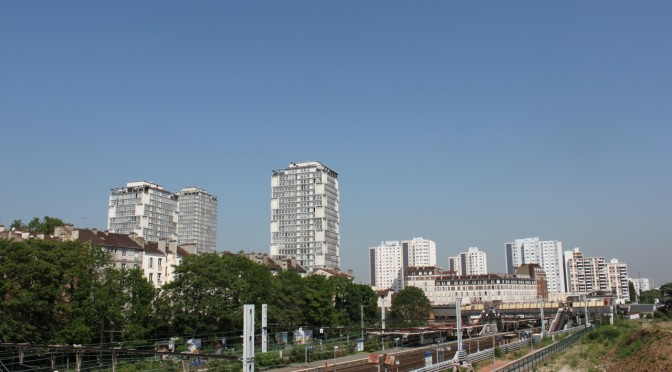On January 29th, 2014, a conference was held in Paris to present and discuss the new wave of work commissioned by AIGP, the organization created to ensure the ongoing contribution of the interdisciplinary experts initially solicited through the Grand Paris consultation (Le Grand Paris – Part 1: The Launch)
Since the original consultation, AIGP has focused its teams of experts on specific subjects rather than the generalities of planning for Paris. After a wave on housing, this wave of contributions took the theme of “Metropolitan Systems”. Hence the team led by Richard Rogers presented a study on the information economy and large-scale flows of data as they relate to the planning of Paris. The team led by Philippe Gazeau worked on freight logistics.
The one participant who really assumed thought leadership based on fact-based and quantified new work was Christian Devillers.
The Devillers team performed a quantitative cartographic analysis of movement and reached the conclusion that Great Paris is constituted by “living basins” which have a significantly stronger degree of coherence internally than externally. The team defined twenty of these basins, with very different characteristics.
For example, the basin centered on Versailles and Saint-Quentin-en-Yvelines is very autonomous, with a large proportion of people who both live and work inside the area. Others, like the basin centered on the Roissy, the site of Paris’s largest airport, has an extremely distant reach and is very interconnected with the rest of the city.

This analysis allowed Devillers to underscore the very limited amount of public transportation at the scale of the “living basins” and the policy that has supported and facilitated long distance commutes to the detriment of local connections within the “living basins.”
The logical continuation of this work is to give more consistency to these basins as internally coherent communities within the larger Greater Paris, in line with the thinking of a number of teams on how to create “new centralities” in what is currently the suburbs of Paris to overcome our current reality of a metropolitan region with only one real center.
Interestingly, other participants rejected this idea on the basis that Devillers’ “living basins” are very different in terms of socio-economic, demographic and ethnic make-up and that strengthening them would amount to increasing disparities and segregation – the very opposite of the metropolitan idea. An interesting objection, but one that I do not believe takes away any of the value of Devillers’ work.

The conference came at a unique time, with the law creating a new metropolitan entity for Paris in its very final stages of legislative approval. Roland Castro was vociferous in criticizing the Parliamentarians for giving the future Greater Paris an illogical perimeter that will exclude important parts of the city for reasons of political expediency and for canceling the existing inter municipal entities that were just beginning to work. But generally the mood was to accept the law as it was finally voted as an improvement, even if unsatisfying and only incremental, and move on to the next battles.

The team led by MVRDV brought back a sense of reality by reminding everyone that the Byzantine structure of French government remains a major competitive disadvantage. As long as we do not radically simplify the organization by drastically cutting back the number of municipalities in France, by eliminating some of our many layers of government and by adding democratic accountability and readability by voters it will be very difficult to act effectively.

Castro also brought up the idea initially worked up by Yves Lion and the Descartes team of reuniting Paris’s outer arrondissements with the adjacent towns. This proposal would bring the historical core of Paris back to its pre-1860 limits, which would allow policy-makers to more clearly focus on maintaining the historical character of the center while allowing different forms of evolution in the outer arrondissements. Of course, the other benefit would be to extend Paris by creating new organic links over the limit of the périphérique.

Despite this, the discussion of the day was unfortunately too vague. This was in part due to a format that left plenty of time for the politicians to express themselves and for general introductions and a comically short amount of time for the experts to present content.
Overall, the impression one came away with is that the work commissioned by AIGP is much too general, out of step with the Grand Paris project that is now in an operational phase.
Grand Paris is now happening on the ground in places like the Carrefour Pleyel, Roissy, Saclay etc., but the discussion among the panel of experts is still largely at the level of discussion of the 2008 consultation, despite the efforts of the AIGP leadership to take it to more specific issues.
As was pointed out, in contrast with Paris’s other planning agencies, APUR and IAU, there is currently no connection of the AIGP with an institution that could implement any of the thinking into policy. Christian de Portzamparc was vigorous in articulating that the whole undertaking led by AIGP will be marginalized if it is not now focused on action. It seems this enterprise is at a major crossroads, and that continuing along the path taken so far is no longer a real option if the organization is to retain relevance.
